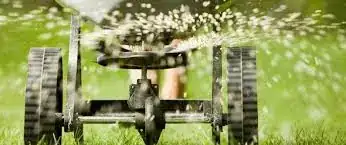I have been asked to purchase a fertilizer spreader for someone as a holiday gift. I'm completely lost as to what features are worth extra money and what features are not. The recipient has an approximately 10,000 square foot lawn and about half of that is currently completely under leaf cover and very shaded. The other half is grass. The terrain is flat in parts but steeply sloped in others. It is quite bumpy. I believe the spreader may be used for spreading seed as well as fertilizer.
I see spreaders with pneumatic tires get raves, but is that overkill for residential use? Would simple plastic plug tires handle bumps and slopes just fine?
What are the pros and cons of a broadcast versus a classic drop spreader?
Is there benefit to the bigger hopper sizes that will hold enough fertilizer to cover the lawn without refilling, or does it make sense to go with a cheaper model that requires a refill part-way?
Are there any features I should consider that aren't on this list?
